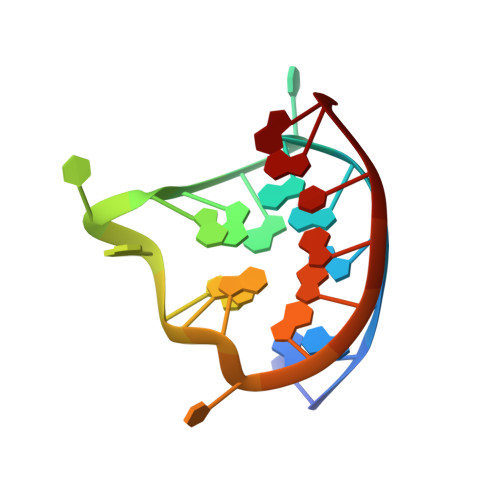Solution Structure of a 2:1 Quindoline-c-MYC G-Quadruplex: Insights into G-Quadruplex-Interactive Small Molecule Drug Design.
Dai, J., Carver, M., Hurley, L.H., Yang, D.(2011) J Am Chem Soc 133: 17673-17680
- PubMed: 21967482
- DOI: https://doi.org/10.1021/ja205646q
- Primary Citation of Related Structures:
2L7V - PubMed Abstract:
Unimolecular parallel-stranded G-quadruplex structures are found to be prevalent in gene promoters. The nuclease hypersensitivity element III(1) (NHE III(1)) of the c-MYC promoter can form transcriptionally active and silenced forms, and the formation of DNA G-quadruplex structures has been shown to be critical for c-MYC transcriptional silencing. The solution structure of a 2:1 quindoline-G-quadruplex complex has been solved and shows unexpected features, including the drug-induced reorientation of the flanking sequences to form a new binding pocket. While both 3' and 5' complexes show overall similar features, there are identifiable differences that emphasize the importance of both stacking and electronic interactions. For the first time, we describe the importance of the shape of the ligand as well as the two flanking bases in determining drug binding specificity. These structures provide important insights for the structure-based rational design of drugs that bind to unimolecular parallel G-quadruplexes commonly found in promoter elements.
Organizational Affiliation:
College of Pharmacy, University of Arizona, 1703 East Mabel Street, Tucson, Arizona 85721, United States.
















